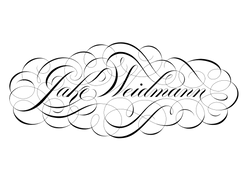Iconography was an ancient form of worship to God through the practice of art. Artists would dedicate their lives to learn many different mediums of art and perfect their skills through countless hours of practice. The original intention of iconography was to depict God, the heavens, and many spiritual attributes in visual form. Yet, these worshipful artists would acknowledge the fact that they could never truly depict the supernatural within the natural. So, their paintings and sculptures were created in a way that expressed to the viewer that what they saw was obviously not the supernatural, yet it pointed to the supernatural prototype from which the piece was inspired. Their intention was not to merely invoke an emotional reaction but a spiritual one. This series,
"Three Kings," is my modern expression of iconography. Within these three paintings I have depicted an metaphor of the Holy Trinity. I recognize as the iconographer's of old did, that even with all my skill as an artist I will only be able to create a crude semblance of the God I am describing. I liken this these paintings to the crayon drawing a toddler makes of their father. A loving father praises the child not for the mastery of artistic rendering in stick-figure form, but for the genuine expression of love from a child inadequate to convey it fully. This is an attempt to express through a medium too crude to capture it and skill too inadequate convey it, my love for a God I will never fathom. I have turned to scripture to refer to the symbolic description of God as the “Lion of Judah.” Three lions represent the Father, Son and Holy Spirit. The same symbol of the lion is used in all three paintings to represent the Holy Trinity as three Gods in one.

In Deuteronomy (4:24), God describes himself as a Consuming Fire- a jealous God who pursues his people despite their constant rebellion against Him. God our Father is the light in the darkness; a fire burning bright who yearns for a relationship with His creation. He looks away from the viewer to show God’s inability to truly commune with His people in the Old Testament, because they were cloaked in sin. This King of Glory came to earth and took on a crown not of jewels, but of thorns and died in our stead (Isaiah 53:4-5). The barbed wire is a modern depiction of the crown of thorns and represents His protection over us. The barbed wire is the only man-made element of the three to show that Jesus took on the sin of man. Through His death and resurrection, the veil between God and His people was torn, and thus the profile is broken as God turns His face towards us. Throughout the New Testament, the Holy Spirit is described as the Living Water, and Jesus declared whoever drinks of it shall never thirst again (John 4:13). Through Christ’s death on the cross, we now have access to God through His Holy Spirit who dwells within us. Both eyes of the third lion are shown to convey a greater level of intimacy with a God who pursues us and loves us fiercely.

Lined-up, in succession the paintings express a singular movement across the three poses. From the word of God we are given a pictorial description of the trinity that expresses not only who God is but how He loves us.
"The Lord turn His face towards you and give you peace." Numbers 6:26

If you wish to own this series for yourself,
click here!



